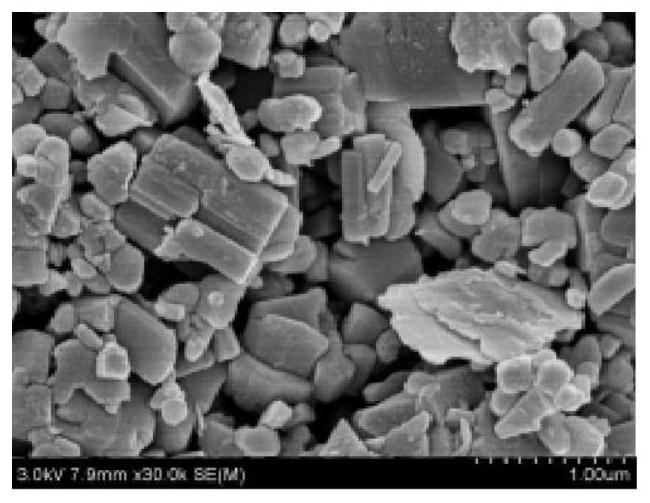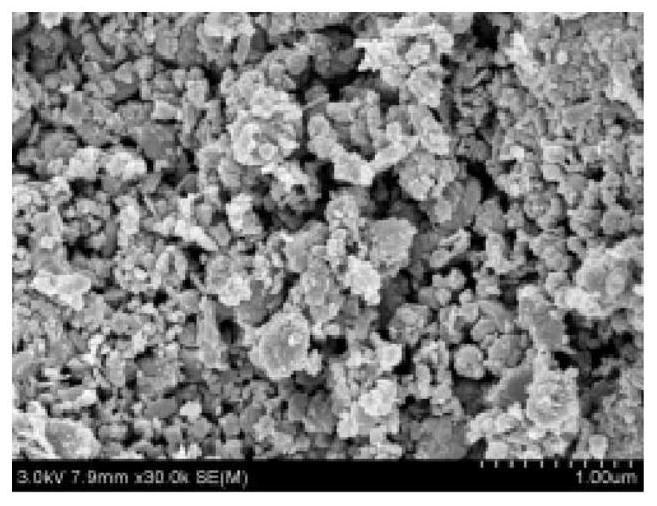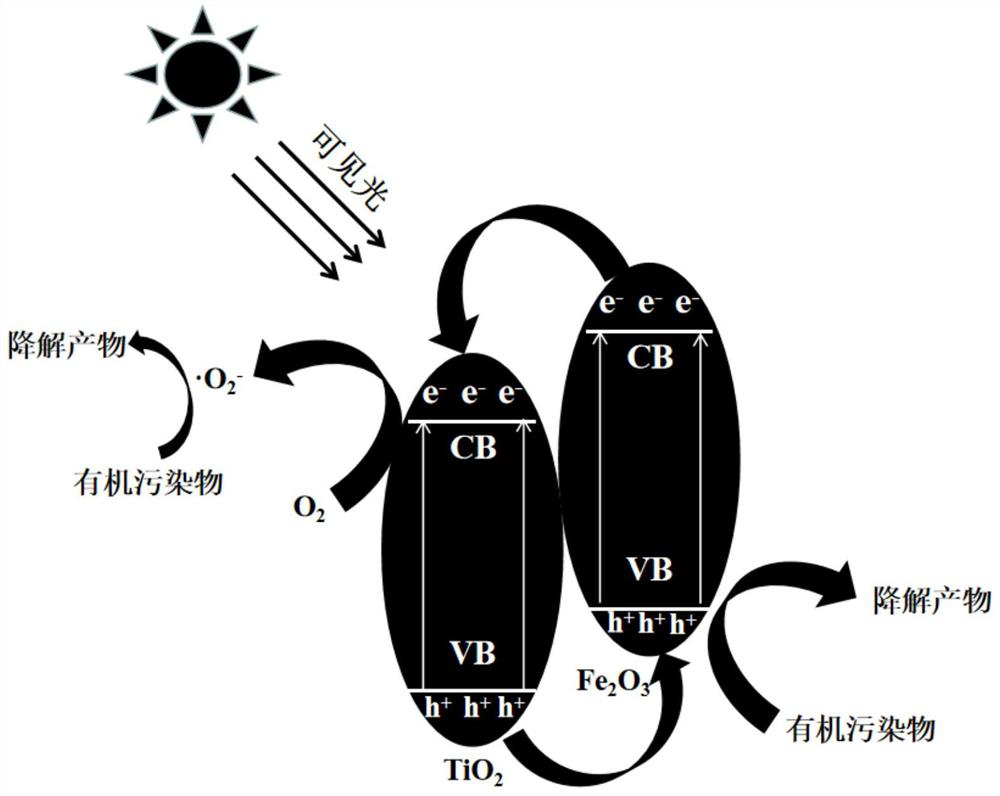Preparation method of composite heterojunction photocatalyst and application thereof
A composite heterojunction, photocatalyst technology, applied in chemical instruments and methods, heterogeneous catalyst chemical elements, physical/chemical process catalysts, etc., can solve the problem that photocatalysts cannot be promoted and widely used, and cannot be effectively recycled. , low photocatalytic efficiency and other problems, to achieve the effect of economical and feasible raw materials, sufficient raw materials, and high photocatalytic activity
- Summary
- Abstract
- Description
- Claims
- Application Information
AI Technical Summary
Problems solved by technology
Method used
Image
Examples
Embodiment 1
[0034] 85 parts of high-iron red mud and 15 parts of wheat stalks were ground to below 150 mesh, and the two were mixed and formed into a cylindrical shape with a pressure of 2 MPa. Then put the mixture into a crucible, put the crucible into a tube furnace, calcinate at 400°C for 20 minutes, keep it warm for 20 minutes, and take it out after cooling. Grinding the calcined cylinder to a 150-mesh sieve to obtain a composite heterojunction photocatalyst. Put 50mg of composite heterojunction photocatalyst into 100ml of methylene blue solution with a concentration of 10mg / L, reach adsorption equilibrium in the dark, and then put it in sunlight for degradation. After the degradation is completed, use a magnet to light the composite heterojunction The catalyst is separated from the aqueous solution.
Embodiment 2
[0036]70 parts of high-iron red mud and 30 parts of bamboo powder are ground to below 180 mesh, and the two are mixed and formed into a cylindrical shape with a pressure of 3 MPa. Then put the mixture into a crucible, put the crucible into a tube furnace, calcinate at 300°C for 30 minutes, keep it warm for 15 minutes, and take it out after cooling. Grinding the calcined cylinder to a 180-mesh sieve to obtain a composite heterojunction photocatalyst. Put 50mg of composite heterojunction photocatalyst into 100ml of methylene blue solution with a concentration of 10mg / L, reach adsorption equilibrium in the dark, and then put it in sunlight for degradation. After the degradation is completed, use a magnet to light the composite heterojunction The catalyst is separated from the aqueous solution.
Embodiment 3
[0038] 95 parts of high-iron red mud and 5 parts of sawdust are ground to below 200 mesh, and the two are mixed and formed into a cylindrical shape with a pressure of 1.5 MPa. Then put the mixture into a crucible, put the crucible into a tube furnace, calcinate at 300°C for 25 minutes, keep it warm for 25 minutes, and take it out after cooling. Grinding the calcined cylinder to a 200-mesh sieve to obtain a composite heterojunction photocatalyst. Put 50mg of composite heterojunction photocatalyst into 100ml of methylene blue solution with a concentration of 10mg / L, reach adsorption equilibrium in the dark, and then put it in sunlight for degradation. After the degradation is completed, use a magnet to light the composite heterojunction The catalyst is separated from the aqueous solution.
PUM
| Property | Measurement | Unit |
|---|---|---|
| Concentration | aaaaa | aaaaa |
Abstract
Description
Claims
Application Information
 Login to View More
Login to View More - R&D
- Intellectual Property
- Life Sciences
- Materials
- Tech Scout
- Unparalleled Data Quality
- Higher Quality Content
- 60% Fewer Hallucinations
Browse by: Latest US Patents, China's latest patents, Technical Efficacy Thesaurus, Application Domain, Technology Topic, Popular Technical Reports.
© 2025 PatSnap. All rights reserved.Legal|Privacy policy|Modern Slavery Act Transparency Statement|Sitemap|About US| Contact US: help@patsnap.com



